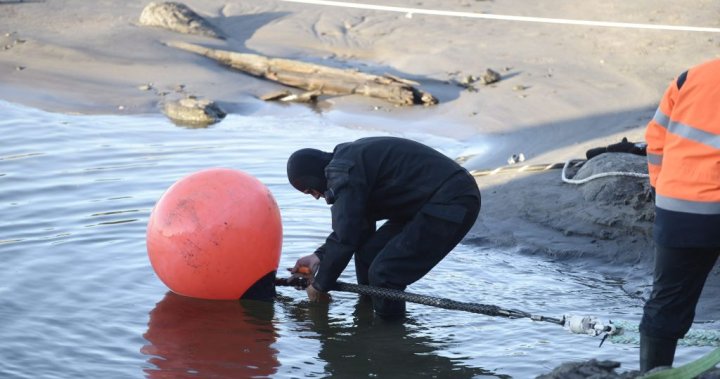A couple of times a week, I’ll get an email that begins, “I’m looking for a song but I don’t know the name of it,” followed by a vague description, lyrical fragments, an attempt to paint a picture of the arrangement (vocals, instrumentation) and maybe a summary of a music video. I’ve even had people send me MP3s of them singing, whistling and otherwise vocalizing what they remember the song to sound like.
When I got into radio, the request line brought forth a steady stream of listeners who wanted to hear a song but knew neither the title nor the artist. Cue the singing, whistling and tortured attempts to communicate what they were looking for.
Oh, the memories. This all takes me back to when I’d go into Sam the Record Man and act out an unknown song to a bored clerk in hopes that they could help me ID the track. That was almost always a useless exercise, but there were occasions when the clerk picked up on it right away. “Oh, yeah. You mean Second Hand News from Fleetwood Mac’s Rumours album.” And so it was. Mystery solved.
Tracking down a mysterious song is easier than ever these days thanks to listening apps like Shazam and SoundHound. Entering a few lyrics into Google might do it. Heading to a streaming music service and typing in title fragments will sometimes work. I’ve found crowdsourcing a song identification problem through certain websites (Reddit, for example) to sometimes be helpful.
But even with all this technology and the ability to tap into the minds of music fans around the planet, some songs just don’t want to the identified. It might be a 20-second clip recorded from a radio broadcast. Someone may encounter it on an unlabelled homemade mixtape. Others can be heard in films or from a long-ago TV show. But no one seems to know their origin, titles, release dates or any other vital information.
Welcome to the world of lostwave.
This isn’t exactly a genre, but it is a category of music that has increasingly captivated online music fans who love puzzles and mysteries. It’s a problem to be solved and whoever is successful will be exalted by their peers.
The first modern lostwave sound involves a song called Ready’n’Steady that was credited to an artist known just as “D.A.” Even though the song was never officially released by any record label (the old charts do say that it came out on Rascal), it somehow made it all the way up to number 102 on the Billboard singles charts in 1979. It was so mysterious and elusive that for decades, sleuths questioned if the track ever really existed.
After decades, it was found. It took a search through the U.S. Copyright Office, which had a registration for a song called Ready & Steady credited to composers D.A. Lucchesi and Jim Franks with a composition date of 1979. An unknown record promoter managed to get it onto the Billboard charts without it actually having been released. How he/she did that is still a mystery. Ready’n’Steady is the only such song to be charted by Billboard without having been commercially released.
If you spend any time online looking for music news, you’ll have inevitably run across The Most Mysterious Song on the Internet (also known as Like the Wind, Blind the Wind, The Sun Will Never Shine and a few other placeholder titles). I’ve had dozens of emails asking about this one. Here’s what we know.
Sometime in the 1980s (1984, maybe?), a teenager known only as Darius S. recorded a song from Norddeutscher Rundfunk, a West German radio station in the north of the country. It’s a new wave-type track that ended up on Darius’s tape alongside Depeche Mode, The Cure, Simple Minds, Corey Hart and others. Any mentions or descriptions by the DJ on the air were not included on the recording. What was this thing?
A snippet first appeared online in the early 2000s with an appeal to ID the song, to no avail. Contacting the radio station and (apparently) even the DJ proved useless. The mystery was revived in 2019 when a Brazilian teenager heard about it from a Spanish fan. A snippet was uploaded to YouTube and a bunch of subreddits. A full version, similarly unlabelled, was eventually uncovered. Over the years, the song circulated through perhaps hundreds of websites. Recordings of the song were even spectrum-analyzed in hopes of getting to the bottom of the problem.
There are theories. The first is that it was a demo sent to the radio station, played once and then thrown out. Another is that it’s a singer from Vienna named Christian Brandi, along with his partner Ronnie Urini, who recorded both German and English versions. That lead was investigated until it was debunked. A Shazam user says the app returned with the artist result “antwon01,” but that led nowhere.
Breaking news from Canada and around the world
sent to your email, as it happens.
Meanwhile, the song has been covered by several bands intrigued by the mystery. No one has come any closer to figuring out the truth.
Maybe you’ll have better luck with this one. Back in 2021, a 17-second clip of an unknown song apparently from the 1980s was found on a DVD backup. Despite widespread crowdsourcing and its own subreddit, nothing has turned up.
Not all of these searches are hopeless. Sometime around 2007, there was internet buzz around a song everyone referred to as How Long and accessed via a Russian bootleg. What was it?
The mystery is now solved. A subreddit contributor with the handle “the-arabara” thought to search the database of SOCAN, Canada’s performing rights society, looking for songs with How Long in the title or lyrics. Boom!
The artist is Paula Toledo, a 52-year-old mom living in Vancouver. How Long – and yes, that’s the title – was recorded in a studio in Langley, B.C., in 2003. Weirdly, the song was never given a proper commercial release. So how did it become such an internet obsession? How Long was licensed to a TV show and a made-for-TV movie. How it ended up on a Russian bootleg will remain a total mystery for now. Have a listen to the original recording, which Toledo is now selling on Bandcamp and is streaming through the usual platforms.
Let me leave you with one more — and this one was personal. Some years ago, a clip of an unidentified song began making the rounds online. As it comes to an end, you hear me about to give the title and artist — but then the recording cuts out.
This drove me nuts. The name of the artist and the title of the song came out of my mouth and was heard by thousands. Yet no one — including me, obviously — had any memory of the track.
I posted it on my website with the desperate hope that someone would recognize the track. And lo and behold, one of the musicians responsible for the song read about it and dropped me a line. The song is not called Ride This Wave Forever as everyone assumed but rather Wavestation by a Canadian band called, er, Wavestation. It appeared on their 1994 album, Mona Lisa.
This is just the tip of the lostwave world. I’ll leave you with a song no one has been able to identify. It was found on the Internet Archive and could be a test pressing of a recording from the late ’50s or early ’60s. Best of luck. Maybe you’ll be a lostwave hero.





